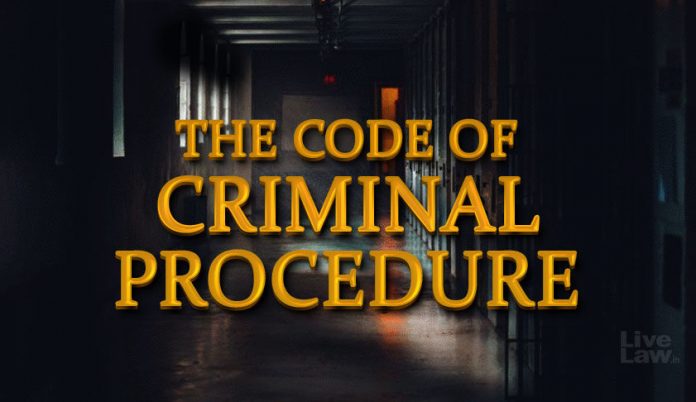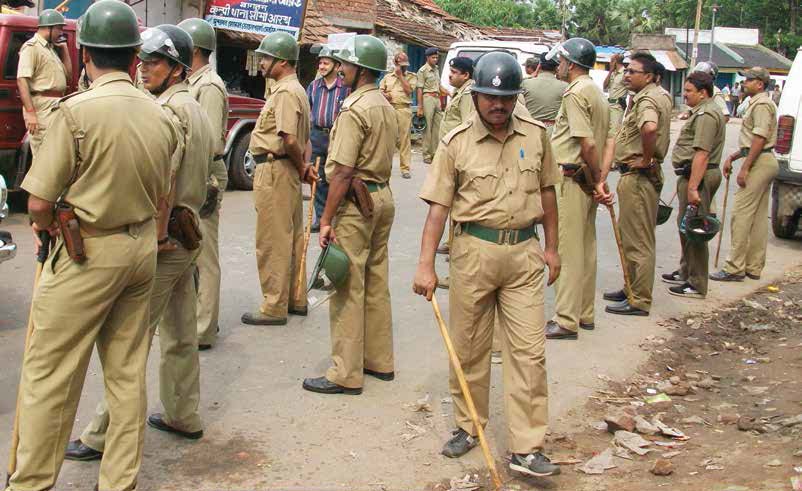This article is written by Adhila Muhammed Arif, a student of Government Law College, Thiruvananthapuram. This article seeks to compare the provisions of probation and parole in the Indian legal system.
Table of Contents
Introduction
Serving punishment for those who indulge in criminal activities is an important function of the criminal justice system. There are various theories as to why and how offenders are punished. The main theories of punishment are retributive theory, preventive theory, deterrent theory and reformative theory. Imprisonment is the most popular form of punishment and it is said to be both preventive and deterrent. However, we have been seeing a shift in society’s approach towards punishment. Now, many scholars are of the opinion that a reformative model of punishment is necessary, as our primary aim should be reformation and rehabilitation of criminals. Many academicians and jurists are of the opinion that corporal punishment and imprisonment harden the minds of petty offenders, especially first time offenders. Therefore, it is necessary that in certain cases, offenders must be provided with a chance to redeem themselves. Both parole and probation are recognized as methods of correction and rehabilitation in the Indian criminal justice system.
Meaning of probation
The word probation is derived from the Latin word ‘probare’, which means ‘to test’ or ‘to prove’. It is an alternative method of correction which is non-custodial. If it is established that incarceration is not suitable for the offender, then the offender can be released into his community under the supervision of probation officers, instead of being imprisoned.
In India, the provisions related to probation in the Indian legal system are provided mainly under the Code of Criminal Procedure, 1973 and the Probation of Offender Act, 1958. Initially, the provision of probation was given in Section 562 of CrPC, 1898. After several amendments, the provision is currently provided by Section 360. The Parliament of India enacted the Probation of Offenders Act in 1958 before the amended CrPC came into force in 1973, which contains certain provisions not covered by the CrPC.
Code of Criminal Procedure
In CrPC, the provisions that deal with probation are Section 360 and 361. Section 360(10) explicitly states that the provisions in Section 360 and 361 do not affect the validity of the provisions in the Probation of Offenders Act or Children Act, 1960 or any such law.
Release on probation of good conduct
Section 360(1) of the Code of Criminal Procedure is what deals with probation. According to this Section, if
- Any person who is not below the age of twenty-one and is convicted of a crime for which the punishment is either imprisonment of seven years or a fine,
- or any person below the age of twenty-one or any woman convicted of an offence that is not punishable with life imprisonment or death penalty and the offender has not been convicted in the past,
- and appears before the court, the court may release the offender on the promise of good behaviour or good conduct, on entering into a bond with or without sureties, to serve the sentence if called by the court during the fixed period.
In the case of Phul Singh v. State of Haryana (1979), the Court stated that probation on the ground of good conduct cannot be granted to someone in his twenties who has committed a heinous offence like rape.
Release after admonition
As per Article 360(3), the offender can be released when the following conditions are satisfied :
- The offender has not been convicted in the past.
- The offence for which he is convicted is theft, theft in a building or dishonest misappropriation or any offence under IPC that is punishable with imprisonment of not more than two years or with a fine only.
In the case of Ahmed v. State of Rajasthan (2000), the Court stated that this provision cannot apply to a person who has used explosives to incite communal tension.
Special reasons for not granting probation
If the court does not award probation, the reason for not providing probation to the offender must be expressly stated in the judgment, whether it’s as per CrPC, Probation of Offenders Act, Children Act or any such law, as per Section 361.
Probation of Offenders Act, 1958
In this Act, the provision of release on admonition is provided by Section 3 and the provision of probation of good conduct is provided by Section 4, and the terms are the same as the ones in Section 360 of CrPC.
Section 5 of the Act permits the court, if it is found suitable, to direct the offender to pay compensation to the victim for the loss or injury incurred to him or even the cost of the legal proceedings.
Section 6 of the Act deals with offenders below the age of 21. This Section states the following :
- The court has to first see whether Section 3 or Section 4 of the Act is applicable for the offender under the age of 21. For that, the court has to call for the report of the probation officer, which is mandatory.
- On receiving the report, the court can decide whether the provisions are applicable or not.
- If the court doesn’t grant probation, it must explicitly state the reasons for not doing so.
Section 7 of the Act states that the report of the probation officer is meant to be confidential. Such a report is only mandatory while dealing with offenders under the age of 21.
Doctrine of Harmonious Construction
Even though the new CrPC was enacted subsequent to the Act, it does not affect the applicability of the Act, especially when Section 360(10) explicitly recognizes the validity of the Act. Therefore, we could say that offenders are entitled to the benefits of both CrPC and the Act. According to the Doctrine of Harmonious Construction, the legislature would not intend to contract themselves. Thus, the enactment of the new Code would not destroy the enforceability of the Act.
Merits and demerits
The following are the merits posed by the method of probation:
- It helps to prevent first time offenders from being influenced by criminals in prison.
- It protects and rehabilitates juvenile offenders.
- It helps in preventing prisons from being over-crowded.
- It provides an offender with a second-chance to function normally in society.
The following are the demerits of the system of probation:
- It permits offenders to free themselves from legal consequences.
- It sends a bad message to people intending to commit crimes that they can walk out free.
Meaning of parole
The word ‘parole’ originates from the French phrase “je donne ma parole”, which means “I give my word”. Like probation, the objective of parole is to allow the prisoner to redeem himself. But parole is a form of release that is applicable only for offenders who are undergoing their prison sentence.
In India, rules regarding parole are provided by the Prisons Act, 1894 and the Prisoners Act, 1900. However, there is no completely uniform law of parole in India as the state governments are free to make their own laws for parole. The guidelines for parole have minor variations from state to state.
Refusal of parole
The following are the types of offenders who cannot be granted parole:
- Who are not citizens of India.
- Convicted for crimes that pose a threat to national security.
- Convicted for crimes against the State.
- Violation of disciplinary rules in prison.
Types of parole
There are mainly two types of parole, which are custody parole and regular parole.
Custody parole
Custody parole is also called emergency parole. It is granted for fourteen days for reasons like the death of close family members like grandparents, parents, siblings, children, spouse, for the marriage of a family member like that of a sibling or son or daughter, etc.
Regular parole
Regular parole is granted for a maximum period of one month, usually for offenders who have served at least one year of their sentence. It is granted for reasons similar to the following:
- Due to any family member being seriously ill.
- Death or accident of a family member.
- When the convict’s wife has given birth.
- To maintain familial ties.
- When there has been serious damage to the life and property of his family due to any natural calamity.
- To file for a special leave petition.
Procedure
On the filing of a petition for parole, usually the Superintendent of the jail requests a report from the police station which arrested the convict. The report, along with all the necessary documents required for the justification of the request for parole and the recommendation of the Superintendent, is submitted before the Deputy Secretary, Home (General), State Government, and he decides whether the convict must be granted parole or not.
In some states, the above mentioned documents are sent to the Inspector General of the Prison and he then sends them to the District Magistrate. The District Magistrate, on the consultation of the state government, decides whether or not parole has to be granted.
Merits and demerits
As established in the cases of Budhi v. State of Rajasthan (2005) and Charanjit Lal v. State (1985), the provision of parole has certain objectives and purposes. The following are the merits or purposes of provision of parole, as per the decisions:
- It enables prisoners to stay in touch with their families and community.
- It helps them to be involved in important matters pertaining to their families, and also solve their personal problems.
- It gives them a short period of relief from the ill effects of being in prison.
- It achieves the purpose of rehabilitation and reformation of the prisoner.
- It encourages prisoners to maintain good conduct in prison.
The following are the demerits of the provision of parole:
- Good conduct during imprisonment is not a guarantee for good conduct after release.
- The chances of political interference are very high. Privileged prisoners with political connections have it easier to receive parole.
Distinction between probation and parole
- Probation is granted to offenders who are released into the community under supervision, instead of being imprisoned. But parole is a temporary release for prisoners and comes with conditions to be followed by the prisoner during that period.
- In India, probation is governed by the Code of Criminal Procedure and the Probation of Offenders Act. But we cannot find a uniform and concrete set of rules and regulations for parole. Though it is recognized under the Prisons Act and Prisoners Act, the state governments are authorized to issue their own parole guidelines, causing variation in parole guidelines across the nation.
- Probation refers to the judgement given by the court to convicts. Meanwhile, parole is just an arrangement of the temporary release of prisoners.
- Probation is an alternative form of penalty granted instead of imprisonment, but parole is granted during imprisonment. Parole is not an alternative to imprisonment.
- Probation is pronounced by the court. Probation is judicial in nature. Parole in India is usually decided by the Deputy Secretary of the Home Ministry of the State or by the District Magistrate. Parole is mostly quasi-judicial in nature.
- Probation is granted before the convict undergoes imprisonment and parole is granted after the prisoner undergoes a minimum period of imprisonment.
- Probation is not granted to offenders who have been imprisoned or convicted before. Parole is granted to offenders undergoing imprisonment.
- When an offender who has been released on probation, defaults on any conditions of probation, he is resentenced to prison for a particular period of time. But violating the conditions of parole sends a convict back into prison to resume the imprisonment based on the original judgment.
- Probation is the first stage in the correctional system of an offender. But parole is in the last stage after the offender undergoes a period of punishment.
- There is less stigma for a person undergoing probation as he is not sentenced to prison. But when a prisoner is released on parole, he would face discrimination in society.
Conclusion
To sum up, both parole and probation are legally recognized methods of rehabilitation and correction in the criminal justice system of India, though they are not recognized as ‘rights’ per se. It helps in reducing the ill effects of imprisonment on convicts and reduces the negative influence of hard-core criminals in the minds of other convicts. However, it might create an impression on many people with malicious intentions that the criminal justice system is lenient and that they would not suffer any repercussions.
References
- https://libertatem.in/blog/parole-and-probation-in-india/
- https://legaldesire.com/probation-parole-comparative-study/
- https://timesofindia.indiatimes.com/readersblog/world-of-change/concept-of-probation-and-parole-a-critique-5184/
- https://saudijournals.com/media/articles/SIJLCJ_29_263-270_c.pdf
- https://criminallawstudiesnluj.wordpress.com/2021/02/23/parole-in-india-current-state-and-the-need-for-reforms/
- https://www.lawctopus.com/academike/probation-under-criminal-law/
- https://indianlegalsolution.com/parole-and-probation/#:~:text=Probation%20is%20approved%20by%20the,the%20parole%20of%20an%20inmate
- https://blog.ipleaders.in/probation-offender-act-1958/#Scope_and_Background
- https://www.researchgate.net/publication/340444499_Sec_360_CrPC_1973_to_be_co-jointly_read_with_Probation_of_Offenders_Act_1958-converted
- https://classroom.synonym.com/advantages-disadvantages-of-probation-parole-12084149.html
- http://internationaljournalcorner.com/index.php/ijird_ojs/article/viewFile/135804/94926
Students of Lawsikho courses regularly produce writing assignments and work on practical exercises as a part of their coursework and develop themselves in real-life practical skills.
LawSikho has created a telegram group for exchanging legal knowledge, referrals, and various opportunities. You can click on this link and join:
https://t.me/joinchat/L9vr7LmS9pJjYTQ9
Follow us on Instagram and subscribe to our YouTube channel for more amazing legal content.
 Serato DJ Crack 2025Serato DJ PRO Crack
Serato DJ Crack 2025Serato DJ PRO Crack











 Allow notifications
Allow notifications



